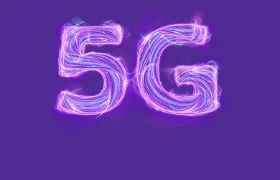5G, 4G, and 3G compared
With Proximus’ 5G network currently rolling out across a number of cities, you may be wondering what the differences are between 4G and 5G.
The ‘G’ associated with cellular networks stands for generation. 5G is the fifth and newest generation of cellular network technology and it should expand the capacity for mobile networks, allowing more devices to use the network than ever before.
The history of mobile
1G networks
The 1980s brought the first generation (1G) of networks with voice-only, analogue service. The top data transmission speed on a 1G network reached around 2.4kbps.
2G networks
The 2G network began in Finland in 1991, allowing mobile phones to move into the digital world. 2G allowed for call and text encryption, as well as SMS, picture messaging, and MMS. The maximum speed for 2G was about 50kbps.
3G networks
The advent of a 3G network with more data, video calling, and mobile internet began in 1998. What we may consider a ‘slow’ network in many large municipalities was the height of technology until 4G came along. 3G networks reached 2mbps on stationary or non-moving devices and 384kbps on devices in moving vehicles.
4G networks
4G, the current standard of cellular networks, was released in the late 2000s and is 500 times faster than 3G. It can support high-definition mobile TV, video conferencing, and much more. When a device is moving the top speed is 10s of mbps, compared to 100s of mpbs when the device is stationary. While it has a peak capacity of 400mbps, most users experience speeds of 10s-100s of mbps. As more people get access to mobile devices and the Internet of Things (IoT) expands, as many as 24 billion devices are expected to need cellular network support by 2024. That’s where 5G comes in.
The benefits of 5G

- Internet surfing speed
- Reduced reaction time
- Energy efficiency
- Capacity
- Stability for mission-critical applications
- Network slicing




